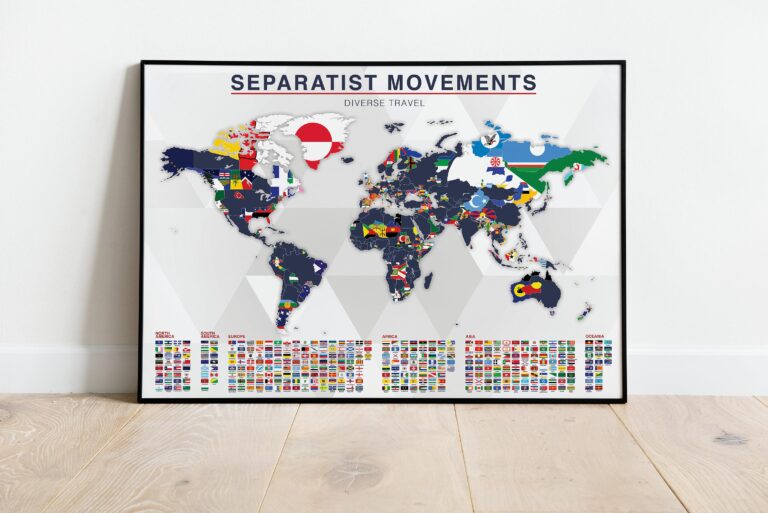A new wave of separatist sentiment is gaining momentum in parts of Canada, challenging the country’s longstanding unity and raising questions about its future political landscape. While the idea of sections of Canada breaking away has surfaced sporadically in the past, recent developments suggest a more organized and vocal movement is taking shape. However, experts caution against interpreting these dynamics as a straightforward path to independence or the creation of a “51st state” within the United States. This article explores the origins, motivations, and implications of the brewing separatist movement, analyzing why it remains unlikely to alter the established map of North America.
Separatist Sentiments Gain Momentum in Canadian Provinces
Across Canada, a wave of regional dissatisfaction has propelled separatist ideas from fringe discussions to mainstream conversations. Provinces like Quebec, Alberta, and even smaller regions have voiced increasing frustration over federal policies, economic disparities, and cultural recognition. This surge is fueled by concerns over resource control, taxation, and political representation, with some advocating for enhanced autonomy rather than outright independence. Analysts suggest that these sentiments have been amplified by global political shifts and economic uncertainties, creating fertile ground for separatist movements to gain traction.
Despite the growing momentum, the prospect of any province breaking away remains highly unlikely in the short term. Key challenges include:
- Constitutional barriers: Changing the status quo requires complex legal negotiations and majority support.
- Economic interdependence: Provinces rely heavily on federal transfers and cross-provincial trade.
- Public opinion: While vocal minorities push separatism, polls show most Canadians favor unity.
| Province | Separatist Sentiment Level | Key Issues |
|---|---|---|
| Quebec | High | Language & Cultural Identity |
| Alberta | Moderate | Energy Policies & Fiscal Autonomy |
| British Columbia | Low | Resource Management & Environmental Concerns |
Analyzing the Political and Economic Impacts of Fragmentation
Canada’s political landscape is showing signs of strain as regional fragmentation gains momentum, particularly in provinces with distinct cultural identities and economic priorities. This growing divide poses a challenge to national cohesion, putting pressure on federal institutions to mediate increasingly complex negotiations. The decentralization of political power could result in a patchwork of governance models, where local governments assert more autonomy, potentially weakening the federal government’s ability to implement uniform policies. Moreover, such fragmentation risks exacerbating tensions between provincial and federal authorities, raising urgent questions about representation, resource allocation, and intergovernmental relations.
Economically, the implications are equally significant. Fragmentation could disrupt trade flows within Canada, complicate investment climates, and shift fiscal responsibilities unevenly across regions. Provinces pursuing divergent economic agendas may challenge existing federal transfers, social programs, and infrastructure projects, creating disparities that could widen the wealth gap between regions. Key economic factors to consider include:
- Impact on interprovincial trade and supply chains
- Variation in tax policies and incentives leading to business relocation
- Potential withdrawal or renegotiation of federal funding agreements
- Increased costs for maintaining duplicative administrative structures
| Factor | Potential Impact | Long-term Risk |
|---|---|---|
| Political Fragmentation | Governance challenges; weakened federal authority | Reduced national unity |
| Economic Disparities | Unequal resource distribution; fiscal imbalances | Widened regional economic gaps |
| Trade Disruptions | Barriers to free movement of goods and labor | Slowed economic growth |
Strategies for Addressing Regional Discontent and Preserving National Unity
Effective management of regional grievances requires a multifaceted approach rooted in dialogue, equity, and cultural recognition. Governments must prioritize inclusive policymaking that not only addresses economic disparities but also preserves the unique identities of Canada’s diverse provinces. Initiatives such as decentralizing certain federal powers, investing in regional infrastructure, and fostering local industries can help bridge the gap between the center and periphery. Additionally, recognizing and promoting multilingualism and Indigenous rights underscores a commitment to respecting the country’s rich cultural mosaic.
Beyond policies, the social fabric plays a crucial role in unifying the nation. Education systems emphasizing shared values alongside regional histories can cultivate mutual understanding and reduce alienation. Below is a snapshot of key strategies currently under discussion to maintain national cohesion:
| Strategy | Purpose | Impact |
|---|---|---|
| Fiscal Equalization | Redistribute wealth to less prosperous regions | Balances economic inequities |
| Cultural Autonomy | Protect regional languages and traditions | Enhances sense of identity |
| Intergovernmental Forums | Facilitate dialogue between provinces and federal govt. | Builds trust and cooperation |
| Targeted Investment | Boost infrastructure and job creation | Fosters regional development |
Closing Remarks
As tensions simmer and debates over identity and governance evolve, Canada’s emerging separatist sentiments signal a nation grappling with its future direction. While the prospect of a 51st state remains remote, the underlying issues driving these movements warrant careful attention from both policymakers and the public. Understanding the roots and ramifications of this separatist momentum will be essential as Canada navigates the complexities of unity and division in the years ahead.




